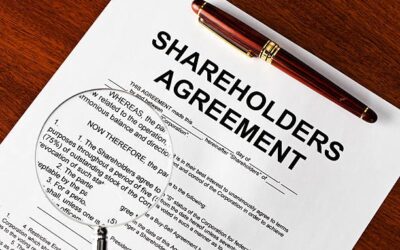If you are an employee working with a start-up or if you are a start-up founder yourself, we bet that you have come across the acronym ESOP. It’s a hot topic in the employment market. So let’s learn about it in detail: what does it mean, what are the nuances involved, what are the legal specifications, what kinds of employees are eligible for ESOPs, and how we can help you with it.

ESOP stands for Employment Stock Ownership Plan. Generally, if you are an employee you get rewarded for your work in the form of a salary and we have often heard employees comparing their profits to the profits of the owners. Well, ESOPs are a great way to bridge the gap.
I guess you all know how Sergey Brin and Larry Page, the founders of Google became the richest in the world along and 1000s of other employees of Google became millionaires overnight after the initial public offering (IPO) of Google.
ESOP is a way of rewarding the employees of the company with stock option plans along with their fixed remuneration. It gives the eligible employees the benefit of buying stocks of the company at a fixed predetermined or discounted price.
This helps the employees feel a sense of ownership in the company and this not only motivates the employees to put their best efforts at work but also helps the company retain its employees.
HOW DOES ESOP WORK?

When an employee joins a company, under the ESOP agreement the employee is granted the option to buy stocks of the company at a predetermined rate. Now, the employees are not given the stocks immediately.
Let’s take an example to understand this better.
Mr X joins a company Amaze and is promised ESOPs worth Rs 10,000 in addition to his salary. Let’s say the valuation of the company is 1,00,00,000 and the total no of shares is 10,000. So the value of each share is Rs 1000. So that means, Mr X has received the option to buy 10 shares at Rs 1000 each. Now the price of each share will remain fixed irrespective of how much the market value of each share increases.
Now here comes the vesting period. This is the period of time the employees have to wait until they can access the benefit. So ESOPs are granted over a period of time that helps the company to retain the employees like Mr X for a period of time. Also, this helps in providing a periodic monetary reward to the employees and this motivates them to work and stay back with the company. Let’s say the vesting period is 5 years, and if it’s yearly vesting then Mr X will receive 2 ESOPs at the end of the year for 5 years. It can be quarterly vesting as well or it can be spread in a different ratio. So, if it’s semi-annual vesting and Mr X decides to leave the company after 2.5 years, he will be eligible for 5 ESOPs.
Again, there is another nuance involved here. If it’s a semi-annual or quarterly vesting you cannot walk away with ESOPs after working for 3 or 6 months in the company. So, there is a minimum duration for which the employee should work in order to be eligible for ESOPs and this minimum time period is called the cliff period. In our example, let’s say the cliff period is 2 years so even if there is semi-annually vesting if Mr X decides to leave the company after 1.5 years he will not be eligible to receive a single ESOP He will receive 4 ESOPs only after he has stayed in the company for the cliff period.
Now, we come to the exercise period. After Mr X decides to resign or leave the company he has to exercise his stock option and convert it into stock within a specific time. This period is called the exercise period. If you do not buy the stocks within this period then the ESOPs will become void as if they never existed.
The duration of the vesting period, cliff period and exercise period are at the discretion of the company.
This process can be easily summed up using a flow chart:

Benefits of ESOP ?
ESOPs reward the employees with the benefit of buying stocks at a predetermined rate irrespective of the current market price and so the employees can sell their stocks at heavy rates later on and make huge profits.
This gives the employees ownership of the company and helps them directly benefit from the success of the company thus improving the productivity of employees and helping the business grow.
This helps to build community wealth as well. On the other hand, companies can attract and retain employees through ESOPs and they can increase their cash flow by paying a part of the remuneration in the form of stocks instead of cash. This way, the company can pay higher remuneration to employees even when they cannot afford to pay high compensation packages in the form of cash and attract productive assets.





